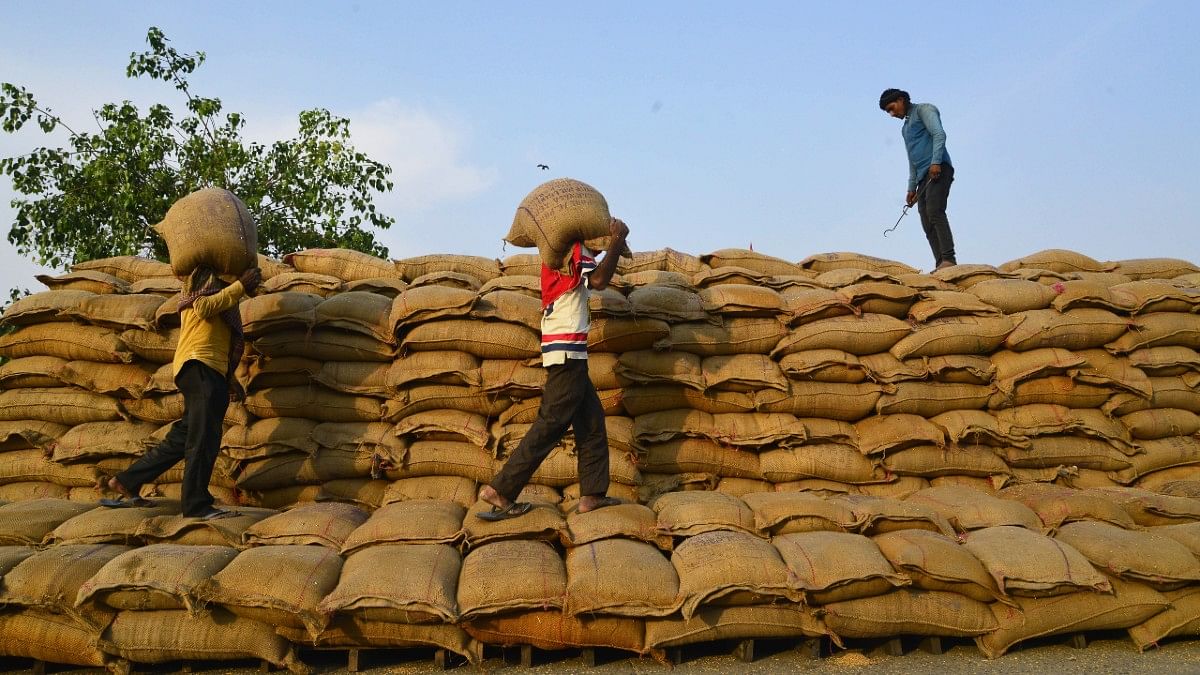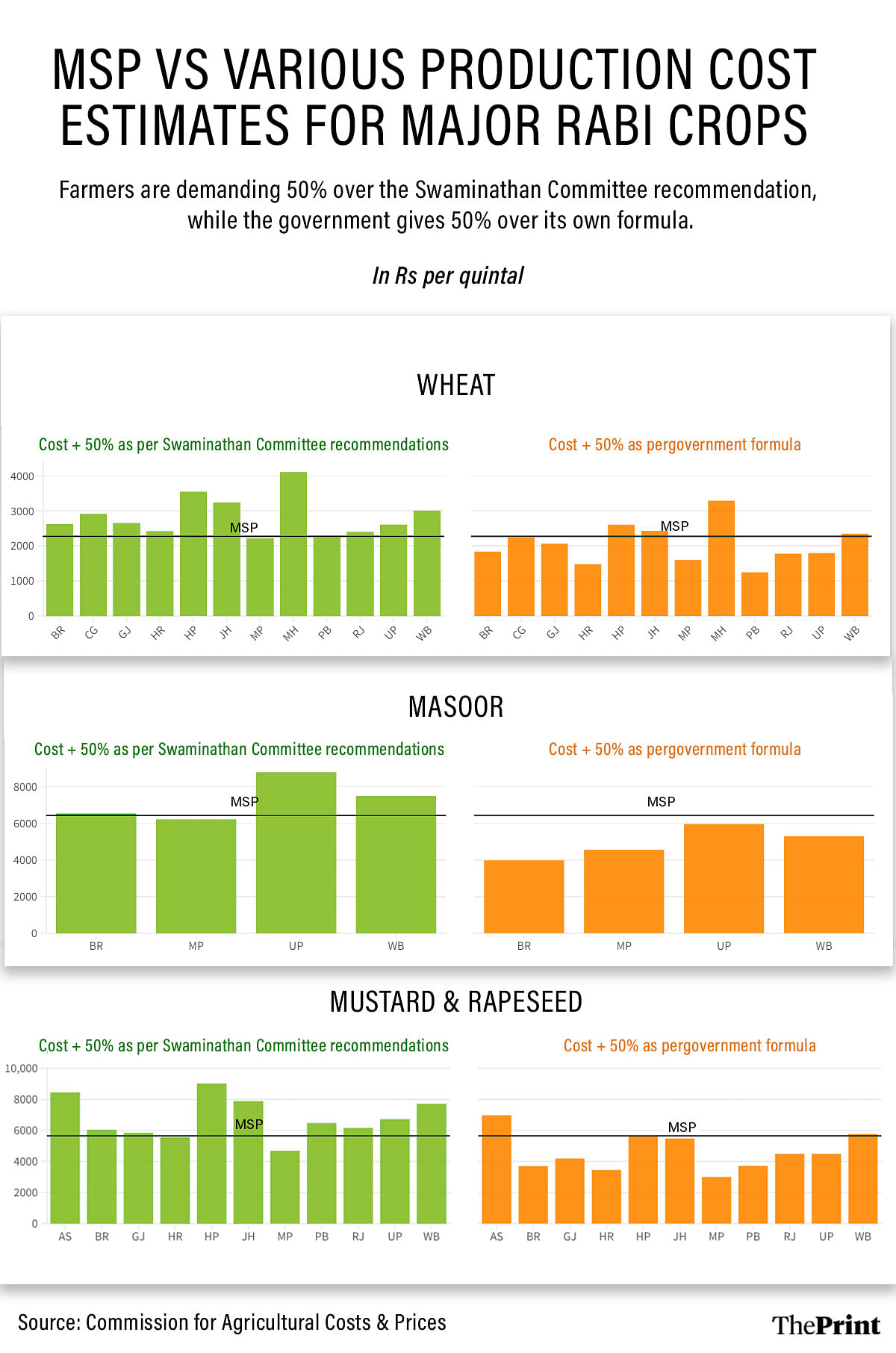Some MSPs higher than farmers’ demands -Courtesy 'The Print'
Swaminathan’s famous C2+50% in major producing states
While farmers are demanding MSP of 50% higher than cultivation cost as per Swaminathan panel's report, ThePrint analysis finds this is already the case in MP, Punjab & Haryana.

New Delhi: Farmers in some of India’s largest agricultural states are already receiving a minimum support price (MSP) for wheat and some other Rabi crops that is more than 50 percent of their total cost of cultivation, in line with their demands, according to an analysis of government data by ThePrint.
This comes at a time when hundreds of farmers from Punjab and Haryana — responding to the ‘Delhi Chalo’ call of the Samyukta Kisan Morcha (Non-Political) and Kisan Mazdoor Morcha — are camped at Shambhu and Khanauri borders.
The formula, as arrived at by the Swaminathan Committee, recommends that the MSP set by the government should be 50 percent higher than the paid-out cost incurred by the farmers, plus the imputed value of family labour and the imputed rental value of owned land plus interest on fixed capital. As a formula, this comprehensive cost is called C2.
At the moment, when setting the MSP, the government calculates the cost to the farmer as only the paid-out cost plus imputed value of family labour under the A2+FL formula. As costs borne by the farmer on account of the rental value of the owned land or the interest on fixed capital are not taken into account, the A2+FL cost is lower than the C2 cost.
However, ThePrint’s analysis found that MSP for most rabi crops such as wheat, masoor, rapeseed and mustard is actually more than 50 percent higher than the comprehensive cost of their production in states that produce the largest quantities of these crops.

Simply put, the MSP is at or higher than the level demanded by the farmers in at least the major producing states.
However, using the A2+FL formula implemented by the government, data shows that MSPs for all rabi crops, including safflower, are more than 50 percent higher than their costs of production in nearly all the states growing them, not just the major producers.
Also Read: Congress finally has MSP mudda against Modi. But 2 more steps to go for it to work in 2024
However, for Madhya Pradesh and Punjab — the second- and third-largest producers of wheat — the MSP is 54 percent and 51 percent of the C2 cost.
Madhya Pradesh accounts for 20.1 percent of the wheat produced in the country, while Punjab’s share is 15 percent. Only Uttar Pradesh (32.2 percent) has a higher share of wheat production.
Using the government’s A2+FL formula, the MSP for wheat is more than 50 percent higher than the cost of production in eight of the 12 wheat-growing states.
When it comes to masoor, the MSP for 2023-24 has been set at Rs 6,425 per quintal, which is 55 percent higher than the comprehensive cost of production in Madhya Pradesh, which alone accounts for nearly 43 percent of the crop cultivated in the country.
According to the government’s formula of A2+FL, the MSP is more than 50 percent higher than the cost of production in even the three other masoor-growing states of Bihar, Uttar Pradesh, and West Bengal.
For mustard and rapeseed, as well, Madhya Pradesh emerges as a high-producing state where the MSP is more than 50 percent higher than the comprehensive cost and A2+FL cost.
The MSP for rapeseed and mustard is 81 percent higher than the comprehensive cost of production of the crops in Madhya Pradesh, which accounts for 14.5 percent of their total production in India. The MSP is 182 percent higher than the cost of production arrived at using the government’s A2+FL formula.
In Haryana, too, the MSP for mustard and rapeseed is 52 percent higher than the combined cost of cultivation. It is 146 percent higher than the cost of production as per the A2+FL formula.
(Edited by Tony Rai)
Also Read: Visible infra progress, Make in India push — what’s driving PSU stocks to meteoric highs

